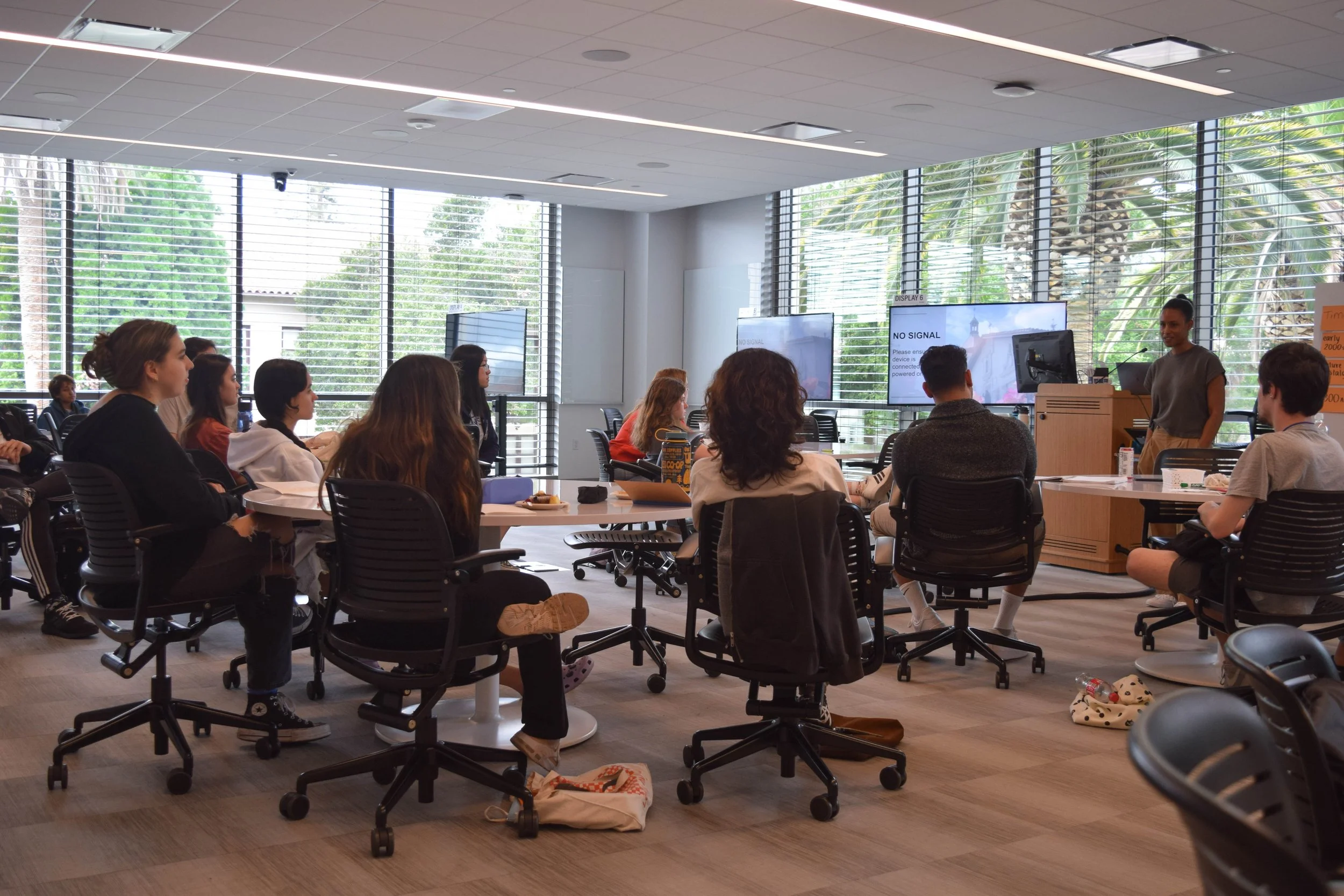Demystifying the Art of Worldbuilding
Source: Elena Peng
Whether you are a communications major or you simply enjoy writing in your free time, coming up with an intriguing fictional story can be difficult. On top of that, writing within the sci-fi or fantasy genres can be even more challenging. So how can you improve your writing skills?
To help answer this question, Netflix and marvel screenwriter Malarie Howard held a screenwriting workshop last weekend. Malarie Howard, who wrote for Thor: Love and Thunder and graduated from Santa Clara in 2013, claims that world building is one of the most important aspects of storytelling.
Worldbuilding or “blue-skying,” as Howard calls it, is the process of creating a fictional world in order to make a story feel more realistic and immersive. George Lucas is an example of a talented worldbuilder who imagined an entire galaxy–filled with unique planets, species, and technology. Luke Skywalker’s home planet of Tatooine is a great example of effective worldbuilding that entertains and grounds the audience. While spaceships traveling at light speed can seem farfetched, the story of a boy raised in a rural agricultural town surrounded by nothing but desert seems more relatable. So what steps did George Lucas likely take when constructing fictional planets like Tattoine?
“Some good categories to start with when building a world are time period, environment, and people,” says Santa Clara sophomore Sully Misner, who attended Howard’s workshop.
Misner, who plans on one day winning an Oscar for best picture, found Howard’s workshop informative and inspirational. She hopes to implement worldbuilding techniques during the screenwriting process for her upcoming murder mystery short film.
Not everyone who attended the workshop studied film or communications. Misner explained that the group consisted of business majors, CS majors, and even one student who plans on designing theme park rides.
One of Misner’s main takeaways from Howard’s workshop was that when you first start worldbuilding, it’s best to establish the larger contexts of your fictional world, and then narrow down to the finer details from there. You may want to think about the culture, economics or power systems within your new civilization. As you continue narrowing your focus, you’ll begin to feel increasingly acquainted with your fictional world. At this point, understanding your characters’ motivations, interpersonal relationships and struggles will come more naturally.
The workshop was discussion-based and encouraged collaboration. Howard led the discussion but also allowed attendees to express their own creative freedom with a storyboarding activity.
Towards the end of the workshop, the small group had put together a captivating fantasy realm which Misner described as “a mix between the retro futurism from the 50s and Y2K technologies.”
As Misner stated earlier, choosing a time period to use as a reference is a good way to ground your story in a pre-established context. From here, the next step is to determine the details of the society that your characters live in. Misner enjoyed this part of “blue-skying” the most.
“The city has brutalist buildings, all concrete, nothing green, but at night it lights up like the city from “Blade Runner”” said Misner.
She then explained how in this dystopian city, working class citizens barely scrape by while the aristocratic elite, funded by agriculture goliaths, continue to accumulate wealth.
“Then we were thinking of a potential character who lives in this world. So we came up with the idea of a chef who comes from a lower class background but serves upper class customers. We thought this character was interesting because he kind of bridges the gap between the two groups,” Misner said.
While the worldbuilding process may be more distinct and intensive in the sci-fi and fantasy genres, it's applicable to nearly every story writing process. One of Howard’s favorite examples of worldbuilding is in a comedy/drama series called Atlanta written by Donald Glover. Atlanta does a great job of illustrating Atlanta’s cutthroat music industry while also transitioning into surreal and sometimes supernatural sequences.
